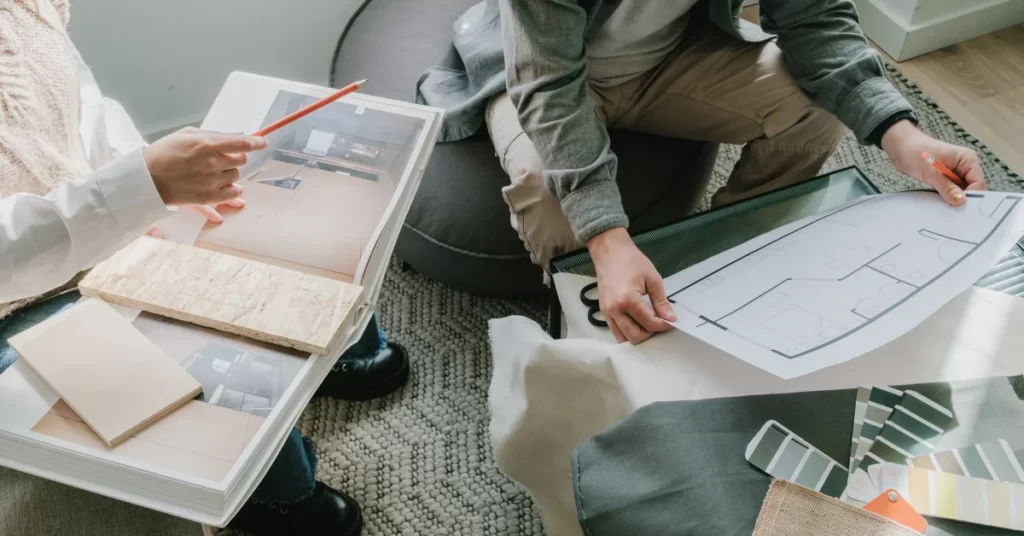When it comes to designing your home’s interior, creating a cohesive and beautiful space can seem like a daunting task. However, with the right tools and guidance, anyone can bring their design ideas to life. In this SketchUp tutorial, we will provide a beginner’s guide to interior design, helping you use SketchUp to transform your visions into stunning reality.

A Beginner’s Guide to Interior Design: How to Create a Cohesive and Beautiful Home with SketchUp
- Getting Started with SketchUp:
SketchUp is a powerful 3D modeling software that allows you to create detailed and realistic interior designs. Start by downloading and installing SketchUp on your computer. Familiarize yourself with the user interface and basic tools, such as the drawing and navigation tools, to navigate the program effortlessly. - Planning Your Interior Design:
Before diving into SketchUp, it’s essential to have a clear plan for your interior design. Consider your personal style, the functionality of each space, and any specific requirements or limitations. Create a mood board or gather inspiration to define the overall aesthetic and color palette you want to achieve. - Creating a Floor Plan:
Begin your interior design project by creating a floor plan in SketchUp. Use the line and rectangle tools to draw the walls and define the layout of each room. Pay attention to accurate measurements and scale to ensure your design is proportional and realistic. - Adding Furniture and Fixtures:
Once you have your floor plan, it’s time to furnish your space. SketchUp provides a vast library of 3D models, including furniture, fixtures, and decorative items. Explore the 3D Warehouse within SketchUp to find the perfect pieces for your design. Place the furniture and fixtures in their appropriate locations, considering functionality and flow within each room. - Customizing Materials and Textures:
To make your interior design truly come to life, utilize SketchUp’s material and texture tools. Apply different materials to walls, floors, and objects to achieve the desired look and feel. Experiment with various textures, colors, and finishes to create a cohesive aesthetic throughout your home. - Lighting and Visualization:
Proper lighting is crucial for showcasing your interior design. Experiment with different lighting fixtures and settings within SketchUp to achieve the desired ambiance and highlight key design elements. Utilize SketchUp’s rendering capabilities or plugins to create realistic visualizations that will help you visualize the final result. - Fine-Tuning and Detailing:
Pay attention to the small details that can elevate your interior design. Add finishing touches like window treatments, artwork, plants, and accessories to create a layered and inviting space. Fine-tune the placement and arrangement of furniture and objects to ensure balance and harmony within each room. - Saving and Sharing Your Design:
Once you’re satisfied with your interior design, save your SketchUp project and export it to different formats such as images or PDFs. This will allow you to share your design with others, gather feedback, and collaborate with professionals if needed.
Whether you’re redesigning a single room or tackling an entire home, SketchUp empowers you to visualize your ideas, experiment with different layouts, and make informed design decisions. With its user-friendly interface and robust features, SketchUp provides a versatile platform for both beginners and experienced designers.
Throughout the design process, keep in mind a few essential tips:
- Scale and Proportions:
Ensure that your design accurately represents the scale and proportions of the real space. Pay attention to measurements and use SketchUp’s measuring tools to maintain accuracy. This will help you avoid surprises and ensure that your furniture and fixtures fit seamlessly into the room. - Color Coordination:
Establish a cohesive color palette for your interior design. Experiment with different colors and combinations to create the desired mood and ambiance. SketchUp allows you to apply various colors and materials to surfaces, enabling you to visualize how different hues will interact within your space. - Texturing and Material Realism:
Take advantage of SketchUp’s material library or create custom textures to enhance the realism of your design. Pay attention to the texture scale, reflectivity, and transparency to achieve a natural and visually appealing look. Small details like realistic wood grain or glossy finishes can make a significant difference in the overall aesthetics. - Lighting Simulation:
Proper lighting is crucial to highlight your design elements effectively. Utilize SketchUp’s lighting tools to experiment with different light fixtures, intensities, and directions. Consider natural lighting, artificial lighting, and their combination to create a well-lit and inviting atmosphere. - Camera Views and Perspectives:
Use SketchUp’s camera tools to capture different perspectives of your interior design. Experiment with various camera angles and viewpoints to showcase the unique features of each room. This allows you to present your design in a visually engaging and professional manner. - Iterative Design Process:
Interior design is an iterative process. Don’t be afraid to make changes and refine your design as you progress. SketchUp’s flexibility enables you to easily modify and experiment with different layouts, furniture arrangements, and materials. Embrace the opportunity to refine your design until it matches your vision.
Conclusion
As you become more comfortable with SketchUp and interior design principles, you can explore advanced techniques such as creating custom furniture, importing 3D models, or even using SketchUp plugins to extend the capabilities of the software.
In conclusion, SketchUp serves as an excellent tool for beginners embarking on their interior design journey. By following this beginner’s guide and utilizing SketchUp’s features effectively, you can create a cohesive and beautiful home that reflects your personal style and meets your functional needs. So, grab your virtual pencil and start bringing your interior design ideas to life with SketchUp today!












